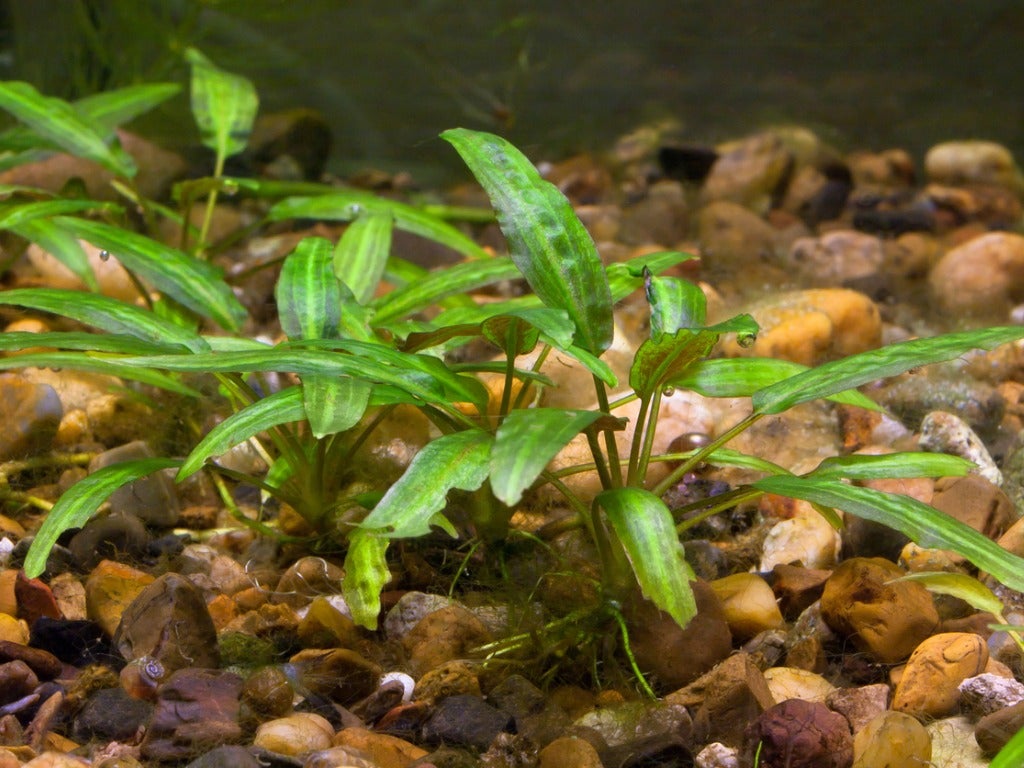Cryptocoryne Plant Info – How To Grow Aquatic Crypts Plants


What are crypts? The Cryptocoryne genus, usually known simply as “crypts,” consists of at least 60 species native to the tropical areas of Asia and New Guinea, including Indonesia, Malaysia, and Vietnam. Botanists and aquatic crypt collectors think there are probably many species left to be discovered.
Aquatic crypts have been a popular aquarium plant for several decades. Some exotic crypt aquatic plants are difficult to locate, but many are easy-to-grow species in a variety of colors and readily available in most aquarium stores.
Cryptocoryne Plant Information
Aquatic crypts are hardy, adaptable plants ranging in color from deep forest green to pale green, olive, mahogany, and pink with sizes ranging from 2 inches (5 cm.) to 20 inches (50 cm.). In their natural habitat, plants may develop interesting, slightly smelly blooms (spadix), resembling jack-in-the-pulpit above the surface of the water.
Some species prefer sun while others thrive in shade. Similarly, many grow in fast running water while others are happiest in relatively still water. Crypts can be separated into four general categories, depending on habitat.
- Most familiar crypt aquatic plants grow in relatively still water along streams and lazy rivers. The plants are nearly always submerged.
- Certain types of crypt aquatic plants thrive in swampy, forest-like habitats, including acidic peat bogs.
- The genus also includes those that live in fresh or brackish waters of tidal zones.
- Some aquatic crypts live in areas that are flooded part of the year and dry part of the year. This type of aquatic crypt generally goes dormant during the dry season and comes back to life when flood waters return.
Growing Crypts Aquatic Plants
Cryptocoryne plants in an aquarium are generally slow growing. They reproduce primarily by offsets or runners that can be replanted or given away. Most will perform well with neutral pH and slightly soft water.
Most of the crypts plants for aquarium growing do well with low light. Adding some floating plants can also help provide a little shade.
Depending on the variety, its placement can be in the foreground or middle of the aquarium for smaller species or the background for larger ones.
Sign up for the Gardening Know How newsletter today and receive a free copy of our e-book "How to Grow Delicious Tomatoes".
Simply plant them in a sand or gravel substrate and that’s it.

A Credentialed Garden Writer, Mary H. Dyer was with Gardening Know How in the very beginning, publishing articles as early as 2007.